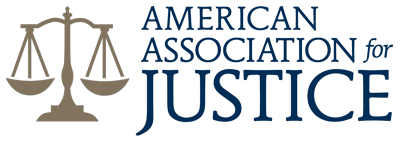Understanding the concept of comparative negligence is crucial for anyone involved in a car accident in New York State. This principle plays a significant role in determining the outcome of personal injury claims and the amount of compensation that injured parties may receive. New York follows a pure comparative negligence rule, which means that even if a party is found to be partially at fault for an accident, they can still recover damages. However, their compensation will be reduced by their percentage of fault. This intricate legal doctrine requires careful navigation to ensure fair and just results in car accident cases.
Legal Framework of Comparative Negligence in New York
The legal framework of comparative negligence in New York is designed to apportion fault among all parties involved in an accident. Under New York’s pure comparative negligence rule, an injured party can recover damages even if they are 99% at fault for the accident. However, the compensation will be proportionately reduced by their degree of fault. For instance, if an individual is awarded $100,000 in damages but is found to be 30% at fault, their compensation will be reduced by $30,000, resulting in a final award of $70,000. This approach contrasts with contributory negligence systems where any fault on the part of the injured party can bar recovery entirely.
This legal doctrine is codified in New York’s Civil Practice Law and Rules (CPLR) Section 1411. The statute stipulates that in any action to recover damages for personal injury, injury to property, or wrongful death, the amount of damages otherwise recoverable shall be diminished in proportion to the culpable conduct attributable to the claimant. This means that courts and insurance companies must carefully evaluate the circumstances surrounding an accident to determine each party’s level of fault.
Determining Fault in Car Accident Cases
Determining fault in car accident cases involves a detailed investigation of the events leading up to the collision. Law enforcement officers typically prepare accident reports that provide an initial assessment of fault based on witness statements, physical evidence at the scene, and traffic laws. Insurance companies also conduct their own investigations to evaluate fault. These investigations may include reviewing police reports, interviewing witnesses, examining vehicle damage, and consulting accident reconstruction specialists.
In court, the process of determining fault is more formalized. Both parties present evidence and testimony to support their claims. The judge or jury then evaluates this evidence to assign a percentage of fault to each party. Factors considered include traffic violations, the behavior of the drivers, road conditions, and any other relevant circumstances. For example, if a driver was speeding or running a red light, they are more likely to be found at fault.
Challenges in Proving Comparative Negligence
Proving comparative negligence can be challenging, as it often involves complex legal and factual issues. One of the primary challenges is gathering sufficient evidence to establish the other party’s fault while minimizing one’s own. This requires meticulous documentation and preservation of evidence from the accident scene. Photographs, witness statements, and surveillance footage can be crucial in demonstrating how the accident occurred and who was at fault.
Another challenge is countering the other party’s claims of fault. In many cases, both parties will attempt to shift blame onto each other to reduce their own liability. This adversarial nature of fault determination necessitates legal representation to effectively argue on behalf of the injured party. Additionally, the subjective nature of fault assessment means that different judges or juries might reach different conclusions based on the same set of facts, adding an element of unpredictability to the process.
The team is very personable, patient and empathetic with their clients. They are upfront with you and will explain the entire process with you, they never lead you to believe otherwise, they tell you like it is and will not sell you a million dollar dream. Trust in Andrews, Bernstein & Maranto, PLLC, they work for you and he looks out for your best interest.” - Jane D.
Role of Insurance Companies
Insurance companies play a pivotal role in the application of comparative negligence in car accident cases. After an accident, both parties typically file claims with their respective insurance companies. The insurers then conduct investigations to determine fault and assess the damages. Because insurance companies aim to minimize payouts, they often argue that the injured party is more at fault to reduce their liability.
Negotiating with insurance companies can be challenging, particularly without legal representation. Insurance adjusters are experienced in handling claims and may use various tactics to minimize settlements. It is crucial for injured parties to understand their rights and the implications of comparative negligence when negotiating with insurers. Legal representation can provide a significant advantage in ensuring that fault is accurately assessed and fair compensation is obtained.
Should I Take The First Settlement Offer? Steps to File a Personal Injury ClaimRelated Videos
Litigating Comparative Negligence Cases
Litigating comparative negligence cases requires a comprehensive understanding of both the facts of the accident and the applicable legal standards. When a car accident case goes to trial, both parties present evidence and arguments to support their version of events. The judge or jury then decides on the percentage of fault attributable to each party and calculates the damages accordingly.
Effective litigation strategies often involve the use of witnesses, such as accident reconstruction specialists, who can provide technical analysis of how the accident occurred. These specialists can offer objective testimony that supports the injured party’s claims and counters the other party’s assertions. Additionally, thorough preparation and presentation of evidence, including medical records, witness testimonies, and photographs, are essential in persuading the judge or jury.
Comparative Negligence and Settlement Negotiations
Settlement negotiations are a common resolution method in car accident cases involving comparative negligence. Many cases settle before reaching trial, as both parties seek to avoid the time, expense, and uncertainty of litigation. During settlement negotiations, the parties and their attorneys discuss the facts of the case, the degree of fault, and the appropriate amount of compensation.
Understanding the principles of comparative negligence is crucial during these negotiations, as it influences the bargaining positions of both parties. An injured party’s attorney must present a compelling case to demonstrate the other party’s fault while minimizing their client’s responsibility. This requires negotiation tactics and a thorough understanding of the evidence.
Verdicts & Settlements
Importance of Legal Representation
Navigating the complexities of comparative negligence in car accident cases underscores the importance of legal representation. An experienced attorney can provide invaluable assistance in gathering evidence, negotiating with insurance companies, and presenting a strong case in court. They can help injured parties understand their rights, assess the strength of their claims, and pursue fair compensation.
Without legal representation, injured parties may find it challenging to effectively advocate for themselves, especially when dealing with insurance companies that have significant resources and experience. An attorney can level the playing field, ensuring that the injured party’s interests are protected and that they receive the compensation they deserve.
Steps to Take After a Car Accident
Taking the right steps immediately after a car accident can significantly impact the outcome of a comparative negligence case. First and foremost, it is essential to seek medical attention for any injuries, no matter how minor they may seem. Prompt medical treatment not only ensures the well-being of the injured party but also provides crucial documentation of injuries, which can be used as evidence in a claim.
Next, documenting the accident scene is critical. This includes taking photographs of the vehicles, the surrounding area, and any visible injuries. Collecting contact information from witnesses and obtaining a copy of the police report can also be valuable. These steps help preserve evidence that can be crucial in establishing fault.
Consulting with an attorney as soon as possible after the accident is highly advisable. An attorney can provide guidance on interacting with insurance companies, gathering and preserving evidence, and navigating the legal process. Early legal intervention can make a significant difference in the success of a comparative negligence claim.
Long-Term Implications of Comparative Negligence
The long-term implications of comparative negligence extend beyond the immediate resolution of a car accident case. The percentage of fault assigned to an individual can have lasting effects on their insurance premiums and their ability to recover damages in future accidents. Insurance companies may increase premiums for drivers who are found to be at fault in an accident, even if their degree of fault is relatively low.
Additionally, understanding comparative negligence is crucial for individuals who frequently drive in New York. Being aware of how fault is determined and how it impacts compensation can encourage safer driving practices and help individuals make informed decisions after an accident. Knowledge of this legal principle can also empower individuals to advocate for themselves more effectively in the event of an accident.
Comparative negligence is a fundamental concept in New York State car accident cases, influencing the determination of fault and the amount of compensation that injured parties can receive. Understanding this principle and its implications is essential for anyone involved in a car accident. From the legal framework to the challenges of proving fault, the role of insurance companies, and the importance of legal representation, navigating the complexities of comparative negligence requires careful consideration and strategic action.
Contact Us Today
If you or a loved one has been involved in a car accident in New York and are facing the challenges of a comparative negligence claim, it is crucial to seek professional legal assistance. The attorneys at Andrews, Bernstein & Maranto, PLLC are dedicated to helping you navigate this complex process and secure the compensation you deserve.
Contact us today to schedule a consultation and let us help you protect your rights and achieve the best possible outcome for your case. Your road to recovery and justice starts with a single step — reach out to us now.












